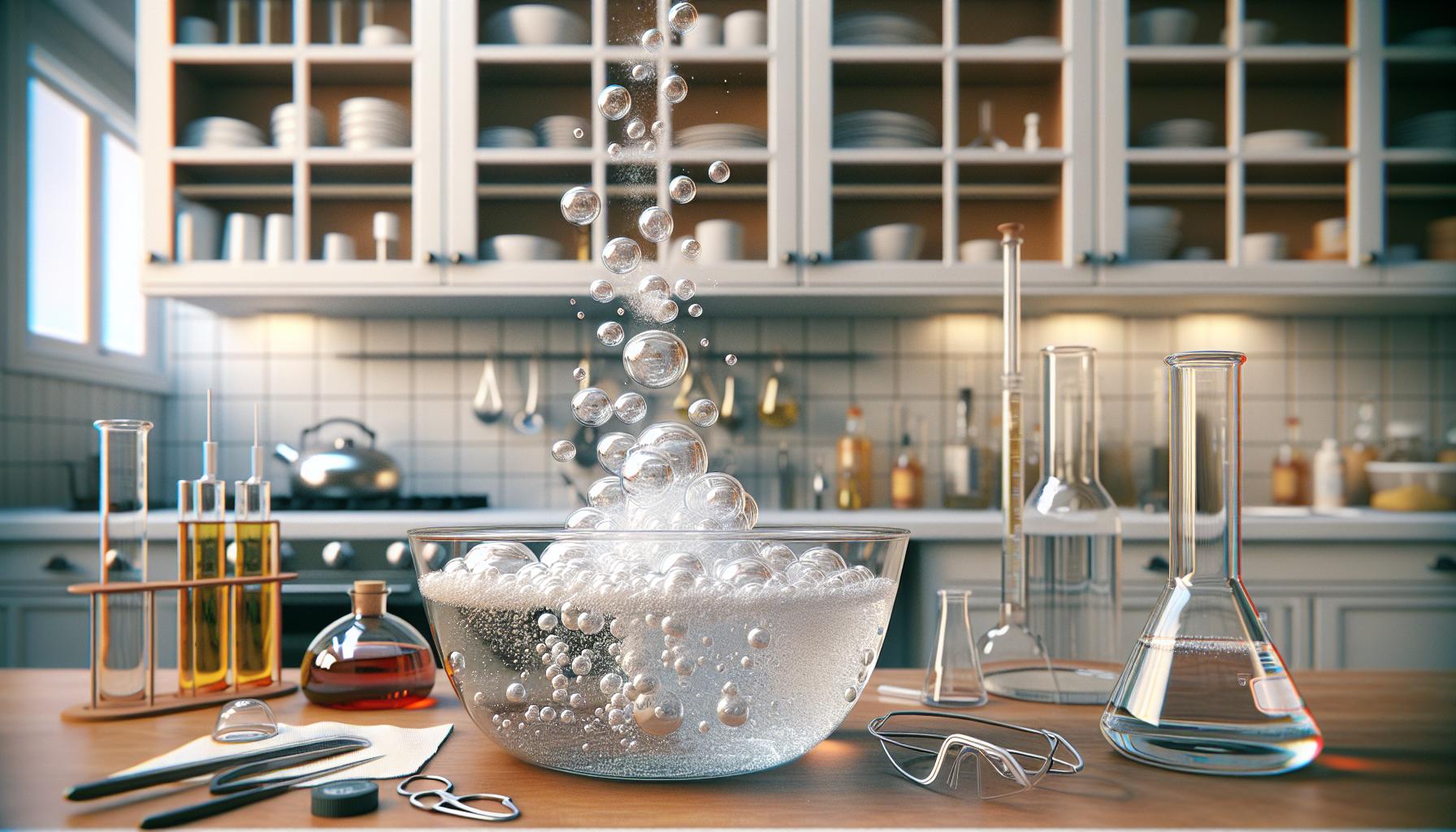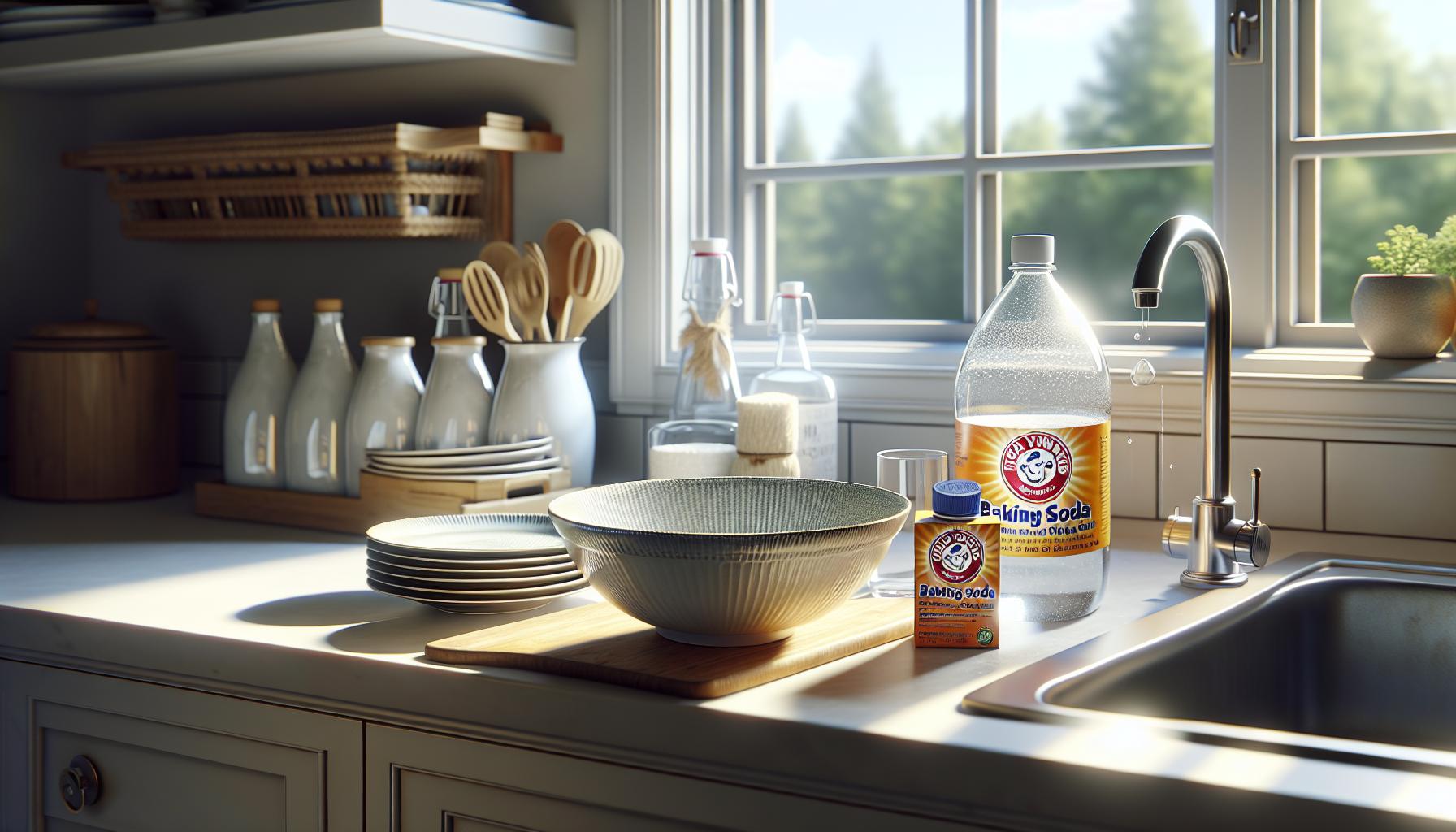
The classic combination of baking soda and vinegar has captivated science enthusiasts and cleaning aficionados for generations. From elementary school volcano experiments to tackling stubborn drain clogs these common household ingredients create an impressive fizzy reaction that’s hard to resist.
While this dynamic duo might seem like a cleaning superhero team it’s natural to wonder about their safety when combined. After all watching them bubble and foam can make anyone pause and think “Is this kitchen chemistry actually safe?” The good news is that when used properly baking soda and vinegar create a non-toxic reaction that’s generally safe for both cleaning and educational purposes.
Is Baking Soda and Vinegar Safe
Baking soda and vinegar are common household ingredients with distinct chemical compositions. Their unique properties create the characteristic fizzing reaction when combined.
Chemical Properties of Baking Soda
Baking soda consists of sodium bicarbonate (NaHCO3), a white crystalline compound. The chemical structure contains sodium ions, hydrogen atoms, carbon atoms, and oxygen molecules in a specific arrangement. This alkaline substance has a pH level of 8.3, making it an effective base for chemical reactions. Sodium bicarbonate molecules break apart in water, releasing negatively charged bicarbonate ions that react with acids.
Types of Vinegar and Their Composition
Vinegar contains acetic acid (CH3COOH) diluted in water, typically at a 4-8% concentration. Different varieties include:
- White vinegar features 5% acetic acid with 95% water
- Apple cider vinegar combines fermented apple juice with 5-6% acetic acid
- Rice vinegar contains 4% acetic acid derived from fermented rice
- Balsamic vinegar incorporates 6% acetic acid from aged grape must
- Wine vinegar consists of 6-7% acetic acid produced from fermented wine
Each type maintains an acidic pH between 2.0-3.0, creating the characteristic sour taste. The acetic acid molecules donate hydrogen ions in water, producing the acidic properties that react with bases.
Safety Considerations When Mixing Baking Soda and Vinegar

Mixing baking soda and vinegar creates a safe chemical reaction that produces sodium acetate, water and carbon dioxide. Understanding the reaction process and following proper safety measures ensures optimal results.
The Chemical Reaction Explained
The combination of baking soda (sodium bicarbonate) and vinegar (acetic acid) triggers an acid-base reaction:
- NaHCO3 + CH3COOH → CH3COONa + H2O + CO2
- The reaction releases carbon dioxide gas as bubbles
- Sodium acetate forms as a salt byproduct
- Water remains as a liquid component
The effervescent reaction happens rapidly at first contact between the ingredients. Temperature changes during the reaction stay minimal, making it safe for household use. The resulting solution maintains a neutral pH balance once the reaction completes.
Potential Risks and Precautions
Key safety measures for handling baking soda and vinegar include:
- Using containers with adequate space for expansion
- Avoiding contact with eyes or prolonged skin exposure
- Maintaining proper ventilation in enclosed spaces
- Keeping the mixture away from heat sources
- Storing ingredients separately in sealed containers
| Hazard Type | Prevention Method |
|---|---|
| Splashing | Wear eye protection |
| Overflow | Use large containers |
| Fumes | Work in ventilated area |
| Skin irritation | Wear gloves |
Safe Uses Around the Home

Baking soda and vinegar create effective cleaning solutions for various household tasks. These common pantry items offer natural alternatives to harsh chemical cleaners while maintaining safety standards.
Cleaning Applications
The baking soda-vinegar combination tackles tough cleaning jobs throughout the home. Bathroom surfaces benefit from this mixture’s ability to remove soap scum and mineral deposits. Kitchen counters respond well to a paste of baking soda followed by a vinegar spray, eliminating grease and food stains. Toilet bowls become sparkling clean when sprinkled with baking soda, sprayed with vinegar, and scrubbed after the fizzing subsides. The mixture also proves effective for cleaning outdoor furniture, removing mildew from shower curtains, and refreshing garbage disposals.
Drain Maintenance
Slow-running drains respond effectively to baking soda and vinegar treatments. Pour 1/2 cup baking soda directly into the drain, followed by 1/2 cup white vinegar. The fizzing action helps break down organic matter, hair clogs and soap residue in pipes. Cover the drain opening for 15 minutes, allowing the reaction to work through the clog. A pot of boiling water poured down the drain completes the cleaning process. Regular monthly treatments prevent future clogs from developing in kitchen and bathroom drains.
Health and Environmental Impact

The combination of baking soda and vinegar creates a safe chemical reaction with minimal health risks. When used properly, this mixture offers both cleaning effectiveness and environmental advantages.
Effects on Skin and Surfaces
The pH-neutral reaction between baking soda and vinegar makes it gentle on most surfaces. Direct contact with skin causes mild irritation in sensitive individuals. Prolonged exposure dries out hands due to the initial acidic nature of vinegar. The bubbling action proves safe for multiple surface types including ceramic, porcelain, glass, metal fixtures, plastic containers. Regular use on natural stone surfaces like marble or granite requires caution as vinegar’s acidity damages these materials. Testing the mixture on a small, inconspicuous area prevents potential surface damage.
Eco-Friendly Benefits
Baking soda and vinegar provide an environmentally conscious alternative to harsh chemical cleaners. The reaction produces biodegradable byproducts: sodium acetate, water, carbon dioxide. These natural ingredients break down completely without leaving harmful residues in water systems. The mixture creates zero toxic fumes during use. Manufacturing these common household items requires less energy than synthetic cleaning products. The simple packaging reduces plastic waste compared to commercial cleaners. Local stores stock these ingredients, cutting transportation emissions. Bulk purchasing options minimize packaging waste. Using these natural cleaners reduces the release of volatile organic compounds into indoor air.
Best Practices for Handling the Mixture
Safe handling of baking soda and vinegar mixtures requires careful attention to measurements and storage protocols. Following established guidelines ensures optimal results and prevents accidents during use.
Proper Dilution Ratios
The standard mixture ratio combines 1 tablespoon of baking soda with 1 cup of white vinegar for basic cleaning tasks. Different applications require specific ratios:
- Drain cleaning: 1/2 cup baking soda followed by 1 cup vinegar
- Surface cleaning: 2 teaspoons baking soda mixed with 1/2 cup vinegar
- Grout cleaning: 3 tablespoons baking soda with 1/4 cup vinegar
- Laundry brightening: 1/4 cup baking soda with 1/2 cup vinegar
- Toilet bowl cleaning: 1/4 cup baking soda with 1 cup vinegar
Mixing larger quantities increases the reaction’s intensity, requiring larger containers to prevent overflow.
- Keep baking soda in an airtight container away from moisture
- Store vinegar in its original bottle or glass container with a tight seal
- Place ingredients in separate cabinets to prevent cross-contamination
- Label containers with purchase dates to track freshness
- Store both ingredients in cool dry locations below 70°F
- Keep containers out of direct sunlight
- Avoid storing near heat sources or electrical appliances
- Replace baking soda every 6 months for optimal effectiveness
Key Safety
Baking soda and vinegar create a safe effective combination for household cleaning and science experiments when used properly. Their natural properties make them an eco-friendly alternative to harsh chemical cleaners while delivering impressive results across various applications.
Following proper safety guidelines and understanding the basic chemistry behind their reaction ensures both successful cleaning outcomes and engaging educational demonstrations. This versatile duo continues to prove its worth as a reliable sustainable solution for modern households looking to maintain a clean healthy living space without compromising environmental responsibility.


